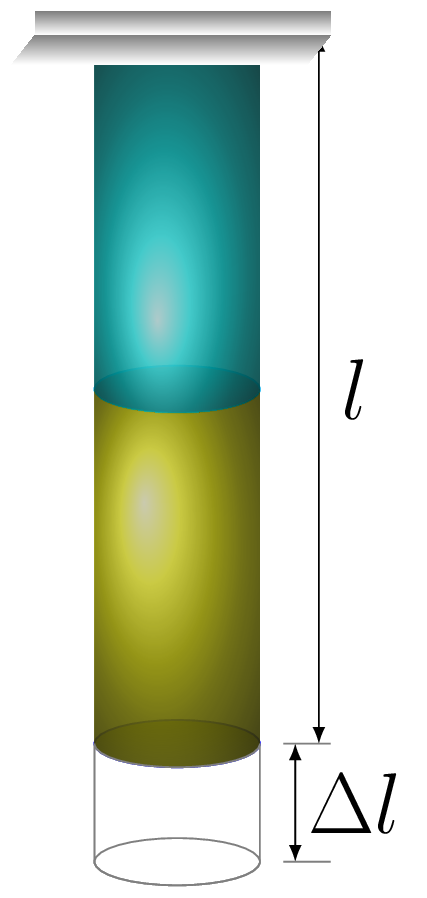Example 8.2.1.
A mass of 10 kg is supported by a steel wire \((Y = 20\times10^{10} N/m^{2})\) of iameter 0.5 mm and length 2 m.
- What is the stress in the wire?
- What is the strain of the wire?
- How much does the wire stretch?
- What is the effective force constant of the wire?
- How much energy is stored in the wire?
Solution.
Given: \(m = 10 \,kg, \quad Y = 20\times 10^{10} \,N/m^{2}, \quad r = 2.5\times 10^{-4} \,m,\quad L = 2 \,m.\)
- \begin{equation*} p = \frac{F}{A}, \end{equation*}\begin{equation*} \quad F = w = mg = 98 \,N, \end{equation*}\begin{equation*} \quad A =\pi r^{2} = 1.964\times 10^{-2} m^{2}, \end{equation*}\begin{equation*} \quad p = 4.99\times 10^{8} \,Pa \end{equation*}
- \begin{equation*} Y = \frac{p}{s}, \quad s = 2.50\times 10^{-3} \end{equation*}
- \begin{equation*} s = \Delta L/L,\quad \Delta L = 4.99\times 10^{-3} \,m \end{equation*}
- \begin{equation*} F = k x, \quad x = \Delta L, \quad k = 1.96\times 10^{4} \,N/m \end{equation*}
- \begin{equation*} E = 1/2 k x^{2}, \quad E = 0.245 \,J \end{equation*}

